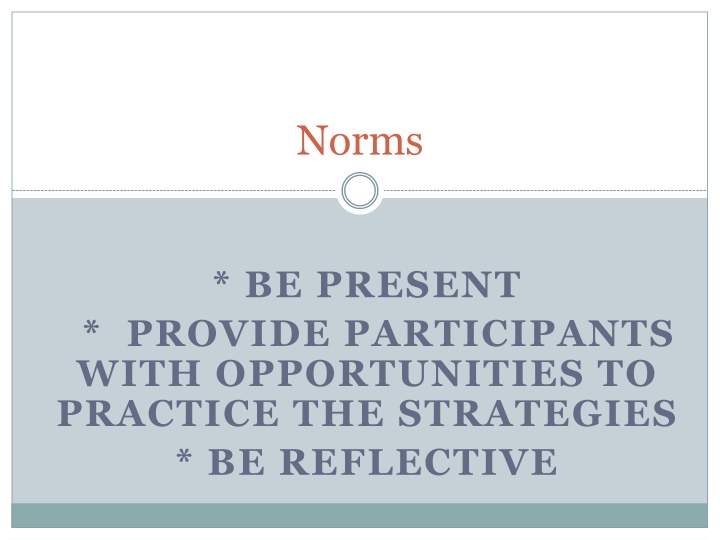
Collaborative Group Work Strategies for Effective Learning
Explore the benefits and strategies of Collaborative Group Work (CGW) to enhance student engagement, improve learning outcomes, and foster critical thinking skills. Learn how to implement CGW effectively and witness its impact on student learning through active participation and social interaction.
Download Presentation

Please find below an Image/Link to download the presentation.
The content on the website is provided AS IS for your information and personal use only. It may not be sold, licensed, or shared on other websites without obtaining consent from the author. If you encounter any issues during the download, it is possible that the publisher has removed the file from their server.
You are allowed to download the files provided on this website for personal or commercial use, subject to the condition that they are used lawfully. All files are the property of their respective owners.
The content on the website is provided AS IS for your information and personal use only. It may not be sold, licensed, or shared on other websites without obtaining consent from the author.
E N D
Presentation Transcript
Norms * BE PRESENT * PROVIDE PARTICIPANTS WITH OPPORTUNITIES TO PRACTICE THE STRATEGIES * BE REFLECTIVE
Common Instructional Framework Strategy: Collaborative Group Work COLLABORATIVE GROUP WORK BRINGS TOGETHER TWO OR MORE STUDENTS AND ASKS THEM TO EXPLORE, CREATE AND UNDERSTAND AN ELEMENT OF COURSE CONTENT. CGW CAN LAST THREE MINUTES OR THREE WEEKS.
CGW Anchors Learning and Integrates the Other CIFs Classroom Talk Collaborative Group Work Scaffolding Questioning Writing to Learn
Implementing Collaborative Group Work Select groups in advance. Establish the type of group--heterogeneous or homogeneous. Determine the size of the groups--pairs or small groups. Select questions for the groups and roles for individuals in the groups. Provide multiple directions: verbal, guided sheet, instructions on the board, on in a diagram. Require every student to produce something; make expectations for the product clear. 1. 2. 3. 4. 5. 6.
Collaborative Group Work in Action https://www.teachingchannel.org/1-3-6 protocol
CGW Criteria CGW has a definite purpose and structure. When properly planned, Collaborative Group Work: requires all students in the group to be engaged as active participants. provides a vehicle for students to participate in a meaningful, intellectually rigorous learning activity. differentiates to include multiple entry points.
Impact of Collaborative Group Work Research shows that educational experiences that are active, social, contextual, engaging, student-owned lead to deeper learning.
Additional Benefits of CGW The benefits of collaborative learning include: Development of higher-level thinking, oral communication, self-management, and leadership skills. Increased retention of material with student- centered learning Respect for and understanding of diverse perspectives. Preparation for real-life situations
Collaborative Group Work Parallels Literacy Groups Collaborative Group Work constructs to create meaning. Literacy Groups deconstruct to create meaning. Collaborative Group Work Literacy Groups
Collaborative Group Work Parallels Literacy Groups Literacy Groups Deconstruct! Students write and plan before the group meeting. Collaborative Group Work Constructs! Students write and plan during the group meeting. Students work in groups Students take on roles Teacher questions and facilitates
The CIF Definition of Literacy Groups Literacy Groups provide students with a collaborative structure for understanding a variety of texts, problem sets, and documents by engaging them in a high level of discourse. Group roles or rounds traditionally drive Literacy Groups by giving students a role to play and a define purpose within the group. The specific roles or discussion guidelines may vary for different content areas, lengths of texts, or students level of sophistication, but the purpose of Literacy Groups is to raise engagement with texts by creating a structure within which students actively probe the meaning of the text or problem set.
Literacy Groups in Action https://www.teachingchannel.org/videos/jigsaws:a- strategy-for-understanding-texts https://www.teachingchannel.org/videos/collaborat e-to-solve-compound-inequalities
Implementing Literacy Groups Select a reading or problem in advance. Establish the type of group heterogeneous or homogeneous. Different skills within a group may provide scaffolding. Provide directions for a text rendering. You may want to use the Jigsaw protocol, but the protocol may differ for problem sets in STEM classes. Require every student to have a role: make expectations clear.






















